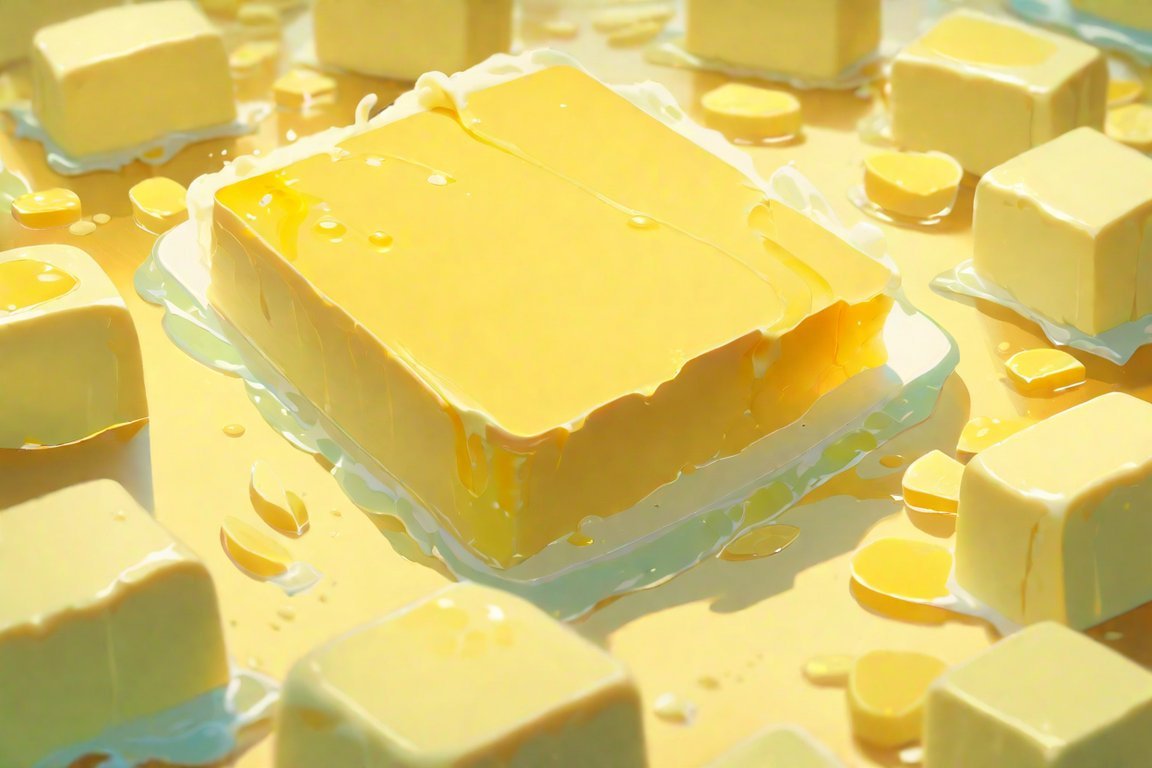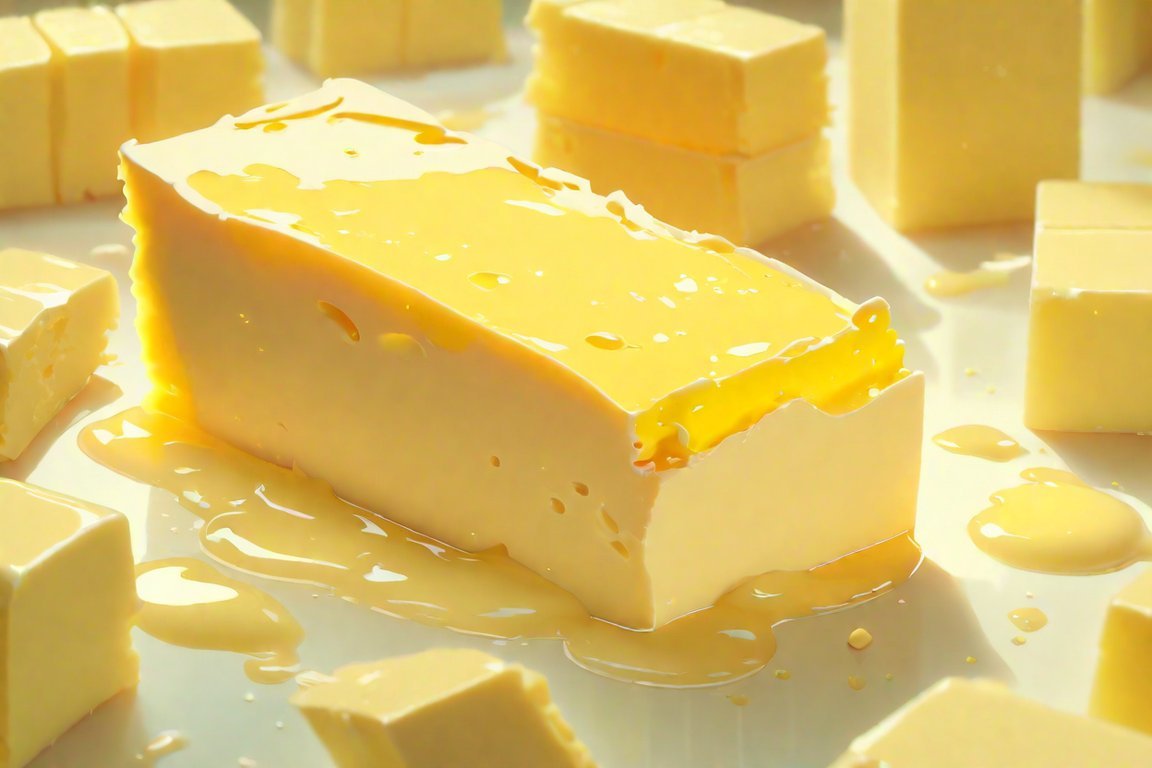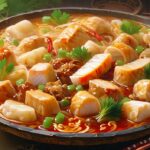
Butter, a staple ingredient in kitchens worldwide, holds a magical quality that enhances the flavors of our favorite dishes. From its rich history dating back centuries to its numerous culinary applications, butter has long captivated the hearts and palates of food lovers. In this article, we delve into the depths of this beloved ingredient, uncovering intriguing facts and offering valuable insights that will pique your curiosity and deepen your understanding of butter’s place in the culinary world. Join us as we embark on a flavorful journey, illuminating the mysteries behind butter’s creamy textures, cultural significance, and undeniable allure.
Key Takeaways:
- Butter is made from the fat and protein components of milk or cream, primarily from cows but also from other animals like yaks, buffalo, goats, and sheep.
- The composition of butter includes at least 80% milk fat, around 16% water, and sometimes salt, preservatives, and flavorings.
- With approximately 715 calories and 67% saturated fat per 100 grams, butter is considered a high-energy food.
- Butter contains significant amounts of vitamin A and minor amounts of calcium, phosphorus, and vitamins D and E.
- Butter is versatile and widely used as a spread, as well as for cooking and baking, thanks to its rich flavor and semi-solid texture at room temperature.
Sources:
1. Dairy.com.au. (n.d.). Butter Nutritional Information | Butter Be… Retrieved from here
2. Factfile.org. (n.d.). 10 Facts about Butter – Fact File. Retrieved from here
Fascinating Facts About Butter
Whether it’s spread on warm toast or used to enhance the flavors of our favorite dishes, butter is a versatile ingredient that has been loved for centuries. But beyond its delicious taste and creamy texture, there are some fascinating facts about butter that you may not be aware of. Join me as we explore the world of butter and uncover its hidden secrets.
Butter: More Than Just Creamy Goodness
When it comes to butter, most of us think of the traditional cow’s milk butter. However, butter can be made from the milk or cream of other animals too, such as yaks, buffalo, goats, and sheep. The fat and protein components of the milk or cream are churned to create this beloved ingredient. With at least 80% milk fat, butter also contains around 16% water, and sometimes salt, preservatives, and flavorings are added for different varieties.
The Nutritional Power of Butter
While butter is known for its rich flavor, it is also a high-energy food. With approximately 715 calories per 100 grams, butter provides a quick and concentrated source of energy. However, it’s important to remember that butter is also high in saturated fat, comprising around 67% of its total fat content. This makes it crucial to consume butter in moderation as part of a balanced diet.
In addition to its energy content, butter offers some nutritional benefits. It contains substantial amounts of vitamin A, which is essential for healthy vision and immune function. Butter also contains minor amounts of calcium, phosphorus, and vitamins D and E. While these quantities may not be significant enough to rely on butter as a primary source of these nutrients, they contribute to our overall nutrient intake.
Butter’s Culinary Versatility
One of the greatest attributes of butter is its versatility in the kitchen. It can be used in various ways, from being spread on bread to serving as a cooking and baking ingredient. Thanks to its rich flavor, butter adds depth and richness to dishes, giving them a delectable taste. Its semi-solid texture at room temperature makes it easy to spread and incorporate into recipes.
Are you curious about the different ways to use butter in your culinary endeavors? Let’s dive into some exciting applications:
1. Spreads and Toppings
From classic toast to fluffy pancakes, butter is a delightful and flavorsome spread. Its creamy texture and rich taste beautifully complement a range of baked goods, adding a luscious touch to each bite.
2. Cooking
Butter’s high smoke point makes it ideal for sautéing, pan-frying, and browning food. Its distinctive flavor enhances the taste of vegetables, meats, and seafood, creating delicious and aromatic dishes.
3. Baking
In the world of baking, butter plays a crucial role. Its ability to add moisture, texture, and flavor to cakes, cookies, pastries, and bread is unparalleled. Without butter, many of our beloved baked goods would lack their signature richness.
In Conclusion
Butter is not just a simple ingredient; it is a culinary marvel that adds depth, flavor, and richness to our favorite dishes. From the diverse animals it can be made from to its nutritional profile and versatile usage, there are indeed fascinating facts about butter worth exploring. So, the next time you enjoy a slice of warm bread slathered with butter or whip up a delectable cake, remember the story behind this beloved ingredient.
Here are some interesting facts about shoes that you may not know. Learn more about facts about shoes and discover fascinating information about the history, design, and trends of footwear.
Are you curious to learn more about the field of mechanical engineering? Click on the following link to explore facts about mechanical engineering and gain insights into this innovative and dynamic discipline.
Scientific Properties and Chemical Structure of Butter
Butter, a beloved and versatile ingredient, has fascinated culinary enthusiasts for centuries. Beyond its delicious taste and creamy texture, butter also possesses unique scientific properties and a complex chemical structure. Let’s dive into the fascinating world of butter and explore its scientific characteristics.
High Saturated Fatty Acids Content
One of the defining chemical properties of butter is its high content of saturated fatty acids. Approximately 70% of butter is composed of these fatty acids, which have been associated with increased cholesterol levels when consumed excessively^1^. While too much saturated fat can be detrimental to health, butter can still be enjoyed in moderation.
Fair Amount of Monounsaturated Fatty Acids
Butter also contains a fair amount of monounsaturated fatty acids, making up about 25% of its fatty acid composition^2^. These types of fatty acids are considered heart-healthy and can help lower cholesterol levels^2^.
Minimal Amounts of Polyunsaturated Fats
In contrast, butter only contains small amounts of polyunsaturated fats, accounting for approximately 2.3% of its total fat content^3^. Polyunsaturated fats are known for their health benefits, such as reducing inflammation and supporting brain function, making it important to incorporate them into a well-rounded diet.
Presence of Cholesterol and Phospholipids
Butter contains cholesterol and phospholipids, which are vital components of cell membranes. These compounds contribute to the unique chemical structure of butter and its role in various culinary applications.
Butterfat: A Mixture of Triglycerides
The predominant fat in butter, known as butterfat, is a combination of glycerol and three fatty acid groups. The specific composition of fatty acids in butter determines its properties, such as texture, flavor, and melting point. Butter is an example of a fat found in nature that showcases the intricate chemistry of triglycerides.
Moisture Content
The moisture content of butter typically ranges between 14.01% to 22.58%^4^. This variation in moisture affects the spreadability and creaminess of butter, making it ideal for both baking and spreading on toast.
Milk Fat Content
Butter is composed of approximately 75.50% to 84.00% milk fat^5^. This high fat content contributes to the rich taste and luxurious mouthfeel that butter brings to dishes.
Solid Non-Fat Content
Within butter, a small portion is comprised of solid non-fat content, ranging from 1.71% to 4.49%^6^. This component contributes to the structure and texture of butter.
Salt Content
Butter can contain a salt content ranging from 0.02% to 1.83%^7^. The addition of salt enhances the flavor profile and acts as a natural preservative.
Titratable Acidity
Butter exhibits a titratable acidity, expressed as lactic acid, ranging between 0.39% to 0.74%^8^. This acidity level influences the sensory properties of butter and its usage in both cooking and baking.
Reichert-Meissl Number
A characteristic measure of butter’s chemical properties, the Reichert-Meissl number, ranges from 26.58 to 28.55^9^. This number reflects the concentration of volatile fatty acids present in butter, with higher values indicating a richer flavor profile.
Polenske Number
The Polenske number, ranging from 1.93 to 2.72, serves as another metric to evaluate butter. This number represents the amount of volatile fatty acids released upon distillation^10^. Higher values suggest greater flavor intensity and aromatic compounds.
Peroxide Value
The peroxide value of butter falls within the range of 0.98 to 1.75 mmol O2/kg^11^. This value measures the level of oxidation in butter, with lower values indicating better quality and freshness.
Butter: A Water-in-Oil Emulsion
One intriguing aspect of butter is that it is formed through the inversion of cream, where milk proteins act as emulsifiers, creating a water-in-oil emulsion. This unique structure allows butter to seamlessly blend with other ingredients while imparting a luscious texture and enhancing flavors.
Solid and Melting Consistency
Butter exhibits distinct consistencies under varying temperatures. It remains solid when refrigerated, softens to a spreadable consistency at room temperature, and transforms into a thin liquid when heated to temperatures between 32 to 35 °C (90 to 95 °F). This melting point makes butter suitable for cooking, baking, and adding richness to various culinary creations.
Butter’s scientific properties and chemical structure provide an intriguing glimpse into the fascinating world of this beloved ingredient. By understanding the unique composition and characteristics of butter, both home cooks and culinary professionals can unlock its full potential in the kitchen.
Key Takeaways:
– Butter contains a significant amount of saturated fatty acids, which should be consumed in moderation.
– It also contains monounsaturated fatty acids that can contribute to heart health.
– Although minimal, butter contains polyunsaturated fats, which have health benefits.
– The presence of cholesterol and phospholipids contributes to butter’s unique chemistry.
– Butterfat is a mixture of triglycerides that determines its properties.
– Butter’s moisture, milk fat, solid non-fat, salt, and acidity levels are variable and influence its taste and structure.
– The Reichert-Meissl and Polenske numbers, as well as the peroxide value, provide important metrics for evaluating butter quality.
– Butter is a water-in-oil emulsion, emulsified by milk proteins.
– Its solid and melting consistencies make it versatile for various culinary applications.
Health Benefits and Concerns Associated with Butter Consumption
Butter, a beloved and versatile ingredient, has long been a staple in kitchens around the world. It adds depth, flavor, and richness to dishes, making it a favorite among culinary enthusiasts. However, it’s essential to consider both the health benefits and concerns associated with butter consumption to make informed dietary choices.
When consumed in moderation, butter provides several health benefits. One of the significant advantages is the presence of fat-soluble vitamins, including vitamin A, D, E, and K. These vitamins play crucial roles in various body functions, such as maintaining healthy skin, supporting bone health, and boosting the immune system^1^. Butter also contains important minerals like calcium and phosphorus, although in minor amounts^2^.
Another notable health benefit of butter is its ability to enhance nutrient absorption. The fat content in butter aids in the absorption of fat-soluble vitamins and minerals from other foods consumed^1^. This makes it a valuable addition to a balanced diet.
However, it’s important to be cautious about butter consumption due to its high saturated fat content. Saturated fat has been linked to an increased risk of diseases like hypertension, heart disease, obesity, and certain types of cancer^1^. Therefore, it is recommended to consume butter in moderation and as part of a well-balanced diet.
A systematic review and meta-analysis of studies found that butter consumption had a small or neutral association with mortality, cardiovascular disease, and diabetes^2^. This suggests that while butter should not be consumed excessively, moderate consumption is unlikely to significantly impact overall health.
Key Takeaways:
– Butter provides fat-soluble vitamins and minerals, supporting various body functions and boosting the immune system.
– The fat content in butter aids in the absorption of fat-soluble nutrients from other foods.
– Butter should be consumed in moderation due to its high saturated fat content, which is associated with an increased risk of certain diseases.
– A systematic review and meta-analysis found that butter consumption had a small or neutral association with mortality, cardiovascular disease, and diabetes.
Versatile Uses of Butter in Culinary Applications
Butter, a beloved ingredient used in kitchens around the world for centuries, offers a range of surprising uses and benefits in cooking. From enhancing the taste and texture of dishes to supporting brain function and vitamin absorption, butter plays a versatile role in the culinary world. In this article, we will explore some of the most versatile uses of butter and how it can elevate your culinary creations.
Enhancing the Taste and Texture of Dishes
One of the most versatile uses of butter in culinary applications is its ability to enhance the taste and texture of dishes. When used as a cooking medium, such as for sautéeing vegetables or searing meat, butter complements and enhances the flavors of the food. It adds a richness and complexity to sauces, making them more velvety and flavorful. In baking, butter contributes to the flavor and texture of cookies, cakes, and pastries, creating a delectable, melt-in-your-mouth experience.
Supporting Brain Function and Vitamin Absorption
Moderate consumption of butter can have surprising health benefits. Butter contains essential fatty acids that are crucial for brain health and function. These fatty acids support cognitive function, memory, and overall brain health. Additionally, butter helps the body absorb fat-soluble vitamins like vitamins A, D, E, and K. These vitamins play a vital role in various body functions, including immune system support, bone health, and antioxidant protection.
Surprising Uses of Butter
Butter isn’t limited to traditional uses like spreading on toast or melting over vegetables. It can be a secret ingredient that takes your dishes to the next level. From golden brown cookies to fluffy pancakes, butter can be used in surprising recipes. Its creamy, rich flavor adds depth and richness to both sweet and savory dishes. Next time you’re in the kitchen, consider incorporating butter in unexpected ways and watch as it elevates your culinary creations.
Storing and Making Butter at Home
To preserve the quality of butter and prevent it from absorbing other flavors in the fridge, it is recommended to store it in an airtight container in the refrigerator. This ensures that the butter stays fresh and maintains its delicious flavor.
Making butter at home can be a fun and rewarding process. It typically involves churning cream until it separates into butterfat and buttermilk. The butterfat is then rinsed and shaped into a desired form. There are various methods and recipes available for homemade butter, allowing you to customize it to your preference.
Alternatives to Butter
If you’re looking for alternatives to butter, there are several options available. Plant-based spreads, such as margarine made from vegetable oils, can be used as a substitute for butter. There are also dairy-free butter substitutes made from ingredients like coconut oil or avocado oil that can be used in cooking and baking. These alternatives provide options for individuals with dietary restrictions or preferences.
Key Takeaways:
– Butter enhances the taste and texture of dishes and contributes to the flavor and richness of sauces and baked goods.
– Moderate consumption of butter supports brain function and aids in the absorption of fat-soluble vitamins.
– Butter can be used in surprising recipes, adding depth and flavor to various dishes.
– To store butter properly, keep it in an airtight container in the refrigerator.
– Making butter at home is a fun and customizable process.
– Alternatives to butter include plant-based spreads and dairy-free substitutes made from vegetable oils.
Sources:
– The Spruce Eats: All About Butter
– Fact Night: [Fun Facts About Butter](

FAQ
Q1: What is the nutritional content of butter?
A1: Butter is composed of at least 80% milk fat, approximately 16% water, and may also contain salt, preservatives, and flavorings. It is high in calories, with approximately 715 calories per 100 grams, and contains around 67% saturated fat. It also provides significant amounts of vitamin A and minor amounts of calcium, phosphorus, and vitamins D and E.
Q2: What are the main chemical properties of butter?
A2: Butter is primarily composed of saturated fatty acids, making up about 70% of its fat content. It also contains monounsaturated fatty acids (approximately 25% of the fat content) and small amounts of polyunsaturated fats (around 2.3%). Butter contains cholesterol and phospholipids, which are important components of cell membranes. Additionally, butter has varying moisture, milk fat, solid non-fat, and salt content, along with specific values for titratable acidity, Reichert-Meissl number, Polenske number, and peroxide value.
Q3: What is the consistency of butter?
A3: Butter remains solid when refrigerated, softens to a spreadable consistency at room temperature, and turns into a thin liquid when heated to temperatures between 32 to 35 °C (90 to 95 °F).
Q4: What are some surprising uses of butter in cooking?
A4: Butter can be used in various recipes to enhance taste and texture. It adds complexity to the flavors of sautéed vegetables and sauces, as well as contributes to the flavor and texture of baked goods, such as cookies and pancakes.
Q5: Are there any alternatives to butter?
A5: Yes, there are alternatives to butter available for those looking for different options. Some popular alternatives include plant-based spreads like margarine made from vegetable oils and dairy-free butter substitutes made from ingredients such as coconut oil or avocado oil.
















